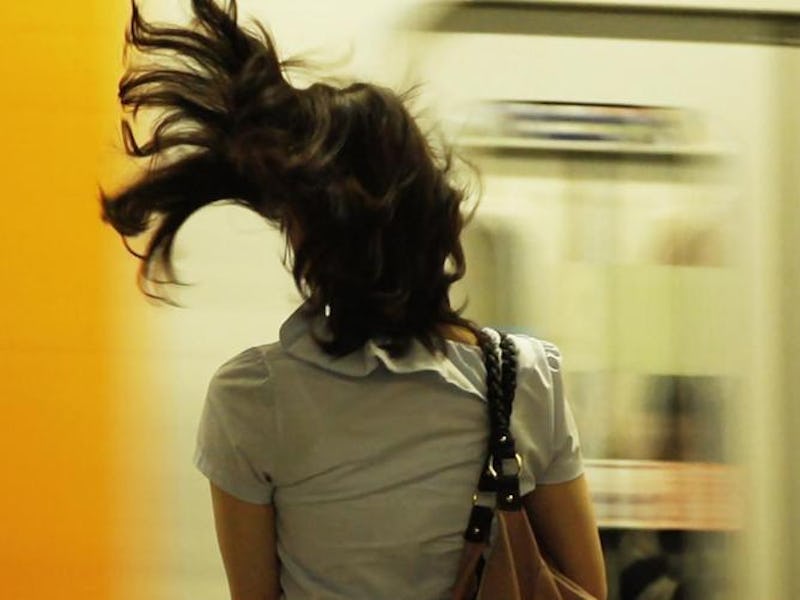'In Pursuit of Silence' and 'The Waiting' Are All Noise With Nothing to Say
The two SXSW premieres couldn't execute their intriguing premises.

Part of the fun of SXSW is you can wander into screenings with only a fraction of an idea, and discover something entirely unique and unforgettable. That’s the hope, anyway. Other times you fall for a clever concept that doesn’t deliver on its promise. Case in point: two movies that premiered at the Austin festival, the contemplative documentary In Pursuit of Silence and the pseudo-horror/thriller The Waiting.
Both created small buzz for their unorthodox takes on genre. One is a subdued look at the affects of silence on our everyday lives, from the start of primitive man all the way to the present, and beyond. The other is a suspenseful tech-driven drama that flirts with found-footage tropes. It follows two teens who plant cameras and booby traps in an unsuspecting elderly neighbor’s house as a psychology experiment.
Each movie leaves enough space for interpretation beyond its central conceit. Yet neither film delivers. Both are unable to hook the audience, and while they don’t fail outright, they still leave a lot to be desired.
In Pursuit of Silence
There’s something undeniably ironic about a tranquil documentary about silence that shows at one of the rowdiest film festivals on the planet. The cacophonous and overbearing sounds of Austin’s 6th Street outside the Alamo Drafthouse Ritz sharply contrased director Patrick Shen’s documentary, which is inspired by author George Prochnik’s book of the same name. In it, Shen begins with of languid landscapes, a breeze flowing through fields of wheat, and water burbling through a stream. They’re images of staid grace, recalling the quieter moments of something like filmmaker Godfrey Reggio’s 1982 semi-experimental classic Koyaanisqatsi. But the comparison ends there.
With a series of standard talking-head interviews, In Pursuit of Silence summons a handful of experts, scientists, and clergymen to explain the absence of sound in our increasingly noisy modern lives. The doc errs on the experimental side, but resorts to didactic habits. It’s part-zen college lecture, part- Terrence Malickean nature show — a scatterbrained one, at that.
For a movie that extols the virtues of patience and godliness of silence sure is busy cramming in as much about quietude as possible. We�����������������re measuring decibels in Tokyo’s Shibuya Square one minute, then we’re given a brief history lesson about John Cage and his seminal silent music piece 4’33 the next; then we’re in New York hearing complaints about public school proximity to noise pollution.
It never coheres into the kind of revelation it wants to be. Instead, the film becomes a disparate and insubstantial commentary, and borders on litany about how noisey New York City is. Whether you’re a jaded New Yorker or not, the generally naive message of the documentary would force anybody to say, if it’s too loud then just get the fuck out. In Pursuit of Silence struggles to adequately say anything about its heaviest ideas.
The Waiting
Kasra Farahani’s The Waiting attempts to balance between indie thriller and friday night popcorn flick, but never chooses one. It also never chooses to thematically follow through with its great set up: Two overly bored suburban teens named Sean (Keir Gilchrist) and Ethan (Logan Miller) use surveillance equipment to torment their crotchety neighbor (James Caan) Harold into believing a supernatural presence is among us. The teens base their doomed plan on a sort of voyeuristic Psychology 101 premise of altered perceptions through social experiments.
It’s rather predictable that the boys — Ethan, in particular — are the the real villains of the movie as they gleefully watch their scheme unfold on a series of pricey computers funded by sympathy money from Sean’s absentee dad. Mysterious sleep-disrupting sounds and a screen door repeatedly slamming are only the beginning of what they have in store, and incidentally subvert any actual horror content, but Harold doesn’t seem to care. Instead he spends long hours in a locked basement where the pair don’t have access, forcing them to cross the line between subject and observer.
The truth about the claustrophobic Harold isn’t revealed until the end, but by that time the clumsy flashback montages shade in the story, they only highlight the repetitive and tedious buildup. Flash-forwards try to keep us guessing, but they only spoil our expectations. While the film raises questions about broken homes, dehumanizing technology, and internet fame it barely answers them, assuming that its Rear Window premise will do all the legwork. But Harold’s story — the key to the emotional impact of the movie — is unfortunately secondary to the incessant bickering of Ethan and Sean’s alpha and beta relationship. It’s kind of annoying to wait for such an unsatisfying reveal.